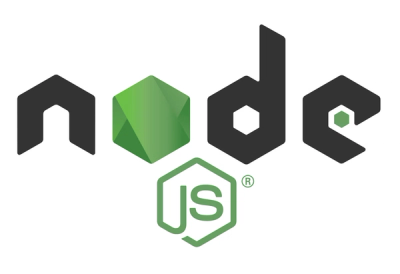
Security News
Django Joins curl in Pushing Back on AI Slop Security Reports
Django has updated its security policies to reject AI-generated vulnerability reports that include fabricated or unverifiable content.
ocelot-docs
Advanced tools
Generate Api documentation using YAML
---
version: 0.4.2
groups:
- wizards
---
wizards:
name: Endpoints to manage those pesky wizards
endpoints:
- get: /wizards list
info: Finds all of the wizards that are available, sorted by hat size
- post: /wizard create
info: Gives birth to a new wizard setting their name and (optionally) hat size
body:
name: string - What to call the wizard
hatSize?: number - How big to make his hat
Docs are rendered to index.html in your output directory, which is docs by default. If there are compilation errors they are rendered instead into that file.
# Install globally
npm i -g ocelot-docs
# Get help
ocedocs --help
# Install locally for dev
npm i -D ocelot-docs
# Run locally (i.e. from package.json scripts)
node_modules/.bin/ocedocs --input api --output docs
# Watch the docs (creates an express server)
node_modules/.bin/ocedocs -w
Docs are written in their own directory, which defaults to /api. Ocelot expects this folder to have an info.yml which has information about your api. Namely it can have the name, template and description of your api. The template is optional and refers to an npm package defining the api template.
name: Wizards Api
template: my-custom-npm-template
description: >
A simple API for creating & managing pesky wizards
After defining that, Ocelot will look for any directories inside your input folder which contain an endpoints.yml.
An endpoints file should contain 2 YAML docs, the first contains version info, details and structure of this version. The second doc contains the endpoint definitions, contained in their groups.
---
version: 0.0.1
base: /
groups:
- wizards
---
wizards:
base: /wzrd
name: Wizards
endpoints:
- id: index
method: get
url: /list
name: Fetch Wizards
info: Looks for all wizards and sorts them by hat size
---
| Field | Info |
|---|---|
version | The version number |
base | optional – A base url that all endpoints will be added on to |
groups | The groups of endpoints in this version, a array of strings |
The groups block should be an object containing definitions for each of the groups defined in version.groups.
| Field | Info |
|---|---|
name | The name of the group |
base | optional – A base url for this group, relative to the version's base |
endpoints | The list of endpoint definitions |
| Field | Info |
|---|---|
id | An identifier for the endpoint |
method | The method to access the endpoint |
url | The url to access the endpoint, relative to the group |
name | The name of the endpoint |
info | optional – A longer description of the endpoint |
responses | optional – A list of response definitions |
params | optional – The url parameters e.g. /find/:id, an argument definition |
query | optional – The query parameters e.g. ?key=val, an argument definition |
body | optional – The json body parameters, an argument definition |
As seen at the top, you can use the endpoint shorthand which defines the method, url & id in one go. The equivalent of above would be:
endpoints:
- get: /list index
name: Fetch Wizards
info: Looks for all wizards and sorts them by hat size
An argument definition is a YAML object with descriptions for a set of arguments. They key is the name of the argument and the value is a string definition containing the type, a dash (-) and the description. If the key ends with a ?, it marks it as optional.
name: string - The name of the wizard
age?: number - An optional age of the wizard
- 200: Success index/success.json
- name: Not Found
status: 404
body: index/notFound.json
A response definition is an array of objects which describes potential responses that the endpoint can return. The first definition is the shorthand and the second is the long form.
name is your name of this responsestatus is the http status code this response comes withbody is a reference to a file which contains the example body (a json file)To look for the body it will look look in data/ inside the version directory, joining the path onto that.
A template is an npm package used to render an api definition using pug. The package should have a template/ directory which should contain:
info.yml – A file containing info about the templateindex.pug – A pug template to render the api definitionerror.pug – A pug template to render errors or warningsname: Custom Template
version: 0.1.2
link: https://example.com
assets:
- js
- css
- img
| Field | Info |
|---|---|
name | The name of the template |
version | The version of the template |
link | A link to the template's author |
assets | optional – A list of directories that will be copied into the compiled result |
For more info, see the default template.
FAQs
Api docs generators using yaml
The npm package ocelot-docs receives a total of 44 weekly downloads. As such, ocelot-docs popularity was classified as not popular.
We found that ocelot-docs demonstrated a not healthy version release cadence and project activity because the last version was released a year ago. It has 1 open source maintainer collaborating on the project.
Did you know?

Socket for GitHub automatically highlights issues in each pull request and monitors the health of all your open source dependencies. Discover the contents of your packages and block harmful activity before you install or update your dependencies.

Security News
Django has updated its security policies to reject AI-generated vulnerability reports that include fabricated or unverifiable content.

Security News
ECMAScript 2025 introduces Iterator Helpers, Set methods, JSON modules, and more in its latest spec update approved by Ecma in June 2025.

Security News
A new Node.js homepage button linking to paid support for EOL versions has sparked a heated discussion among contributors and the wider community.